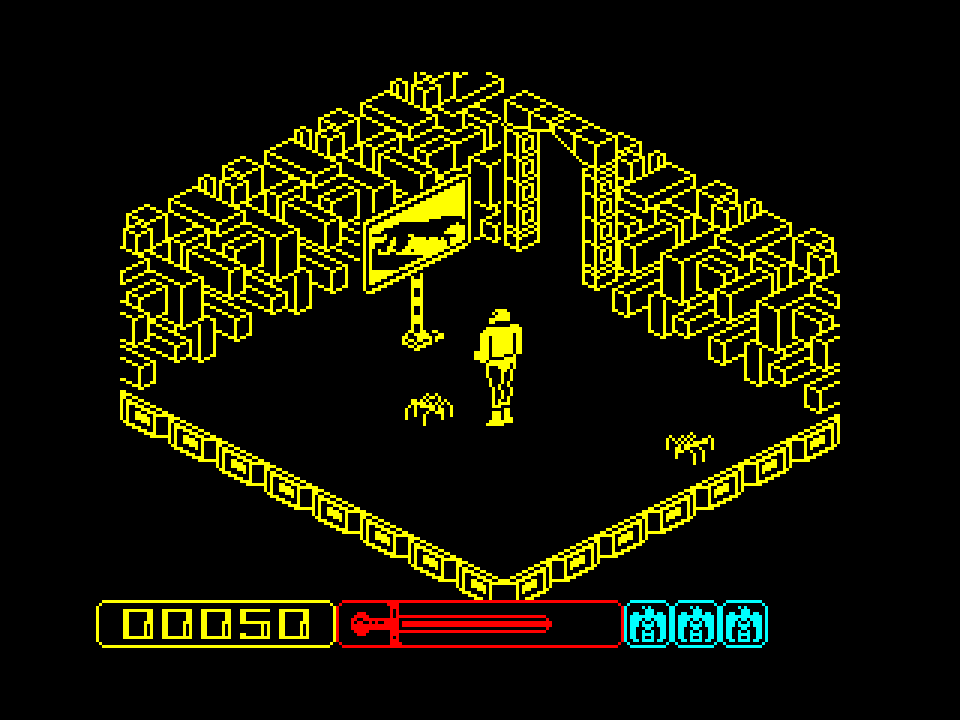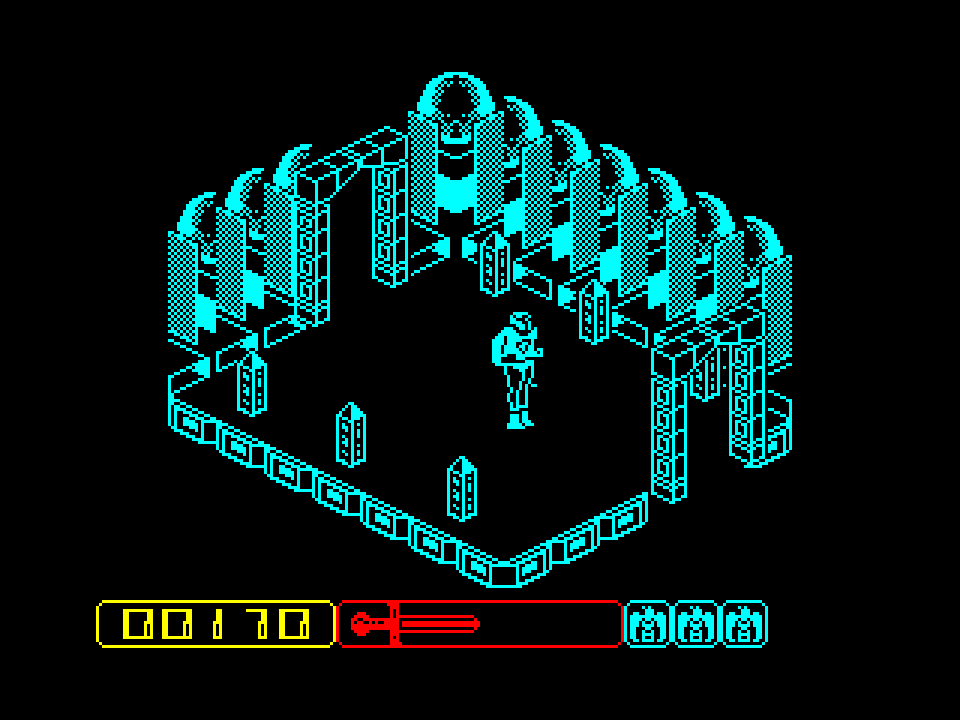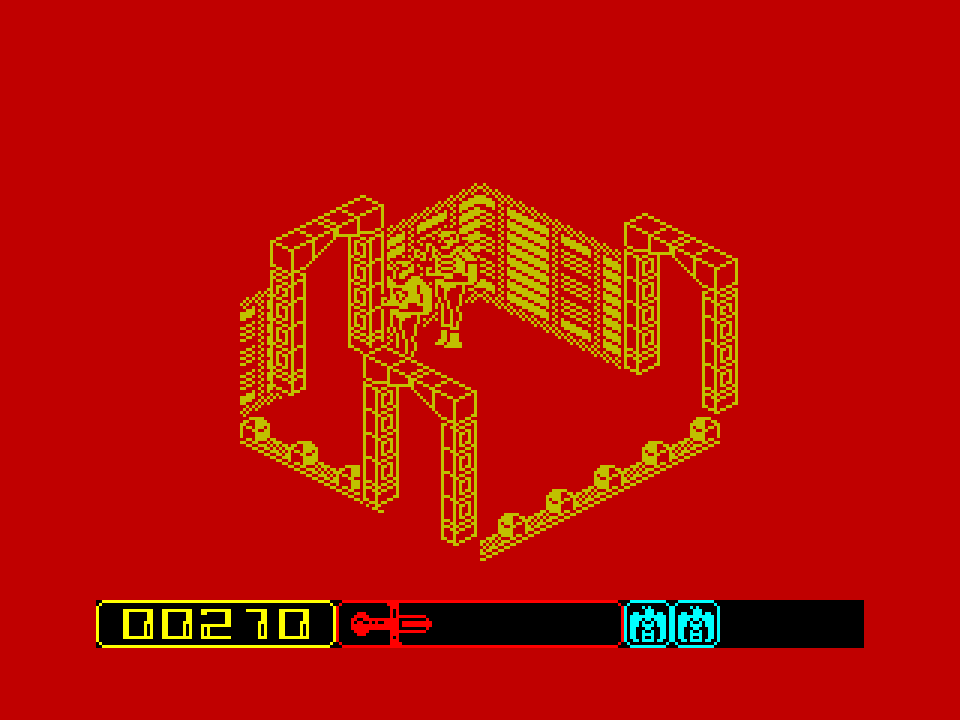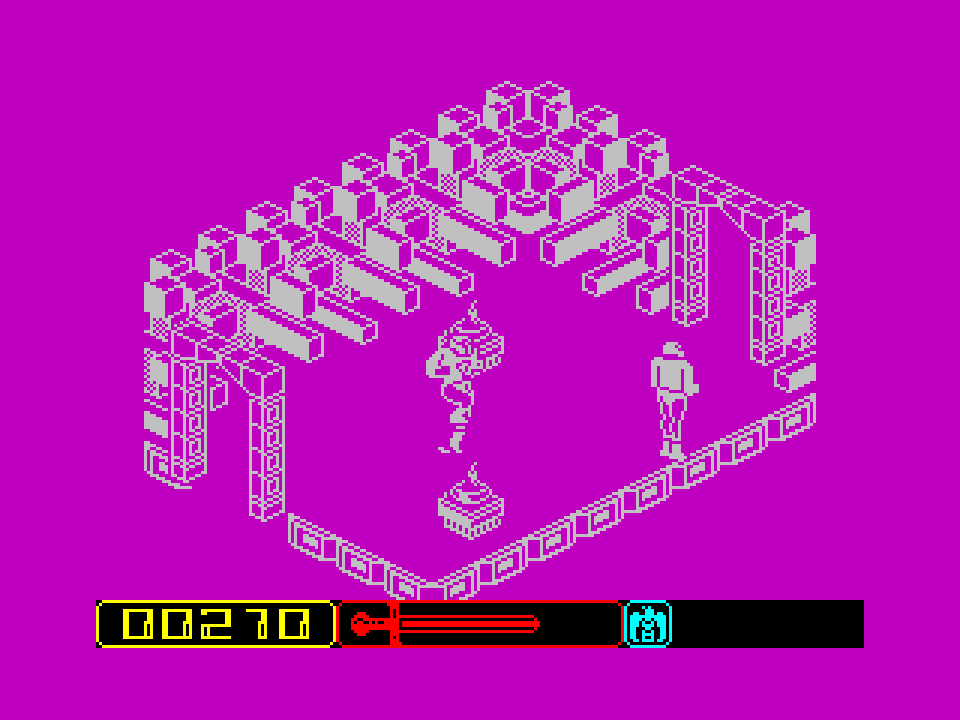Phantom Club Review
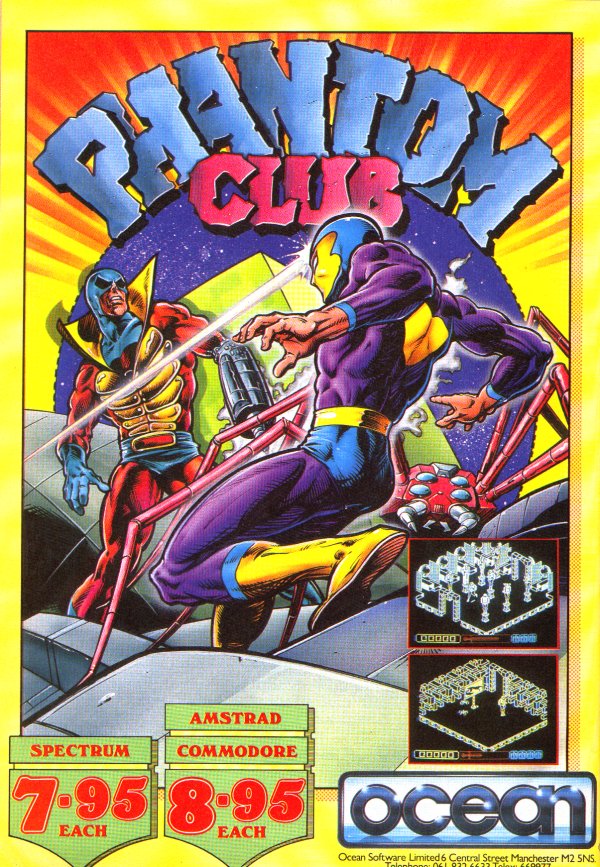
Even superheroes need a club to not feel excluded… And if you want to feel like one of the good guys in a world of evil bastards, your only chance might be to play Phantom Club.
STORY
Zarg is this Overlord who figured that a specific bunch of super-heroes with mad super-powers would do more “good” as baddies instead of super-men of distinguished valor or courage. You, Plutus, thought that this was nothing but a shit idea from the start, which lead to Zarg and his entire gang turning on you. Luckily………… No… “Luck” isn’t on your side at all… But all hope isn’t lost. You might actually have a chance to defeat Zarg and make your x-pals snap out of the crazy.
THE GAME
If flashbacks from Ultimate Play The Game’s “Filmation”-games wash over you, it’s only normal at this point. (Squinting your eyes while throwing a quick glance at the game, and some screens might look like they are from a game like Alien 8.) And getting hit with good memories from Batman– That’s another Ocean-published game… No, not 1989’s Batman: The Movie… The other one– No, not Batman: The Caped Crusader either…! The 1986 one…! – The Spectrum exclusive game by Jon Ritman and the guys… Anyway. Being reminded of that Batman as well as Head Over Heels isn’t strange either. And if those games don’t ring any bells, you might have played another Spectrum exclusive called Movie (Or M.O.V.I.E.) by Dusko “Duke” Dimitrijevic and Dragoljub Andjelkovic. Because that was the first isometric flip-screen arcade adventure from these two gentlemen. Phantom Club is the second and latest one, and would therefore be the true spiritual successor to Movie.
The main difference between Movie and Phantom Club would be the lack of icons and the non-existent amount of interactivity with NPCs in the latter.
CONTENT
Start the game, and Plutus finds himself somewhere in the Phantom Club’s domain. The game area consists of 500+ (!) rooms. (Movie “only” had 200+.) Plutus can move in four directions, somersault, and fire a beam (called “Brainstorm”) from his head. All heroes and “heroes” in the Phantom Club have a specific rank. Zelator is the lowest. (Which Plutus “happens” to be.) Ipsisimus is the highest, i.e., the Overlord. There are ten ranks and ten missions. Every time you complete a mission, your rank increases, giving you a better and better chance at eliminating Zarg.
The title screen gives you four control options as well as the option to load a game. Saving is done in-game by finding a spinning cylinder on a pillar. Zapping the cylinder with the Brainstorm will bring up the option to save or continue since all missions aren’t “usually” done in one session. (Just like, e.g., Head Over Heels, this isn’t an optimal game for speed-running.)
At first glance, Phantom Club appears like many other games in this genre – The protagonist has to avoid traps and shoot nasties while jumping over and running around obstacles. Plutus of the Phantom Club has five lives (The life counter is in the lower right corner of the screen.) and a Power-bar in the shape of a shrinking, red sword. When Plutus loses all energy, he loses a life. However, the gameplay isn’t interrupted. (This is usually a welcome feature, and it certainly is super-welcome here.)
The score-counter in the lower left corner isn’t for obtaining bragging rights on the Hi-score table… As there is no Hi-score table…! Instead, the score determines whether you can accept a mission or not. (A relatively high score will be required for most of them.) Upon completing a mission, the next rank will be purchased with the accumulated points. To accept a mission, you have to locate what looks like a 40″ (At least!) flat-screen on a pillar. Fire a blast of Brainstorm on it, and a screen shows which rank the mission concerns, as well as the objective. (If you have enough points. The missions are usually of the: “Track down and kill this son of a bitch.”-variant.) Finding the right mission screen is one of the challenges. Just like remembering where they are.
And if you don’t want to be cheater, and / or if you want to play Phantom Club the proper way, you just have to get out the pen and some paper and draw a map. (This is always more enjoyable as it becomes your own personal map and you can make helpful notes.) 550+ rooms. The first screen you find isn’t necessarily linked to the first or easiest mission either. For example, I found one mission merely twelve screens away from the starting point. (It’s just unfortunate that it was one of the missions that require a higher rank.)
So what can Plutus himself expect in the maze-like Phantom Club? Spikes appearing on the floors. Huge plants that bite. Other super-heroes that in fact are bad guys in disguise. For example, some of them turn into a couple of smaller spiders when shot. (And these spiders cause injuries. Needless to say, they are best avoided.) Other baddies are temporarily paralyzed when you hit them with the Brainstorm.
And a whole bunch of other stuff.
The two major events that occur is when a specific symbol pops up in the upper left corner. The first event is a character known as the Psi-Man who prevents you from leaving the room until he is defeated. The second event blocks all exits for a number of seconds. Meanwhile, you have to fight and defeat any enemies that attack you.
Extra lives can be found here and there in the shape of levitating spheres. A diamond-shaped object grants Plutus extra quick feet. (This is temporary.) And a rotating sphere on top of a pillar grant Bonus-points when hit by a Brainstorm.
CONTROLS
Keyboard, Kempston, Sinclair, or Cursor. Press keys 1-4 on the title screen to select them. Phantom Club utilizes two different familiar control schemes – Directional and rotational controls. The instructions recommend the “Cursor”-options if you prefer the traditional controls, i.e., the character turns and walks right on screen when the right cursor-key is pressed.
GRAPHICS
It’s quite astounding how much varied graphics that fit in 48 KB of RAM. The backgrounds (Walls and barriers, more like.) have been used in a creative way throughout. Just like the colors. In a “Filmation”-game the background would be black while everything else is in either yellow, green, magenta, red, cyan, white, or blue. In Phantom Club, you might see any adventurous combination like green graphics over white background or even purple on cyan. It doesn’t always look fantastic, but the amount of detail is what counts. All sprites are amazingly well defined. (And nicely animated to boot.)
The graphics also make it possible to identify “landmarks” for knowing your way round. Since there is no time limit, you can concentrate on mastering that somersault and frying people’s asses from multiple angles as they just refuse to stop chasing you.
As usual, you get some frame-rate issues when a whole bunch of “super-heroes” or robots decide to kill you on the same screen. The frame-drops is usually not a big issue and it’s never any problem zapping multiple baddies in the same room…
SOUND
The title screen has a familiar ditty (I’m sure it’s called something since I recognize it from “somewhere”, but… Someone else definitely knows.), and the game has a bunch of functional sound effects and tunelets for the “mission screens”. (And that familiar, yet crushing moment of Game Over.) Nothing spectacular… But nothing ear-shatteringly horrendous either.
SUMMARY
Duke did an excellent good job with this one. It’s everything that one could wish from an “Ultimate”-inspired action-focused game on the Spectrum. While it would have been nice to have a proper sequel to Movie with even more original features, Phantom Club’s strength is everything else basically – The lovely visuals and details. The atmosphere. And the playability is of a high standard. Plus you barely find games in this genre with maps this big.
Phantom Club is also one of those games that takes a while to open up. Things don’t happen right away, and you might wonder if there is nothing else to it than running around and avoiding getting your energy drained. But then, there are the ten missions that all give you something to do. A cause for the system’s own super-hero.
Developed by: Dusko “Duke” Dimitrijevic, Dragoljub Andjelkovic and Simon Butler.
Published by: Ocean
Version Reviewed: ZX Spectrum 48K
Genre: Adventure
Players: 1
Also Available On: N/A
Released: 1988

